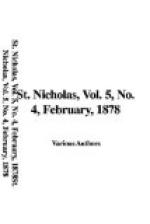Akong joined us at breakfast, and partook of our curry and rice with great gusto, for tea-brokers as a rule are by no means averse to foreign chow-chow, and handle a knife and fork with almost as much ease as they do the native chop-sticks. Charley plied us both with questions regarding tea in general, and probably the following summary will pretty well represent the result of his queries:
The cultivation of the tea-plant is by no means confined to any one district or spot, but is scattered about through the different provinces, each producing its peculiar description known to the trade by its distinctive name. We were now in the Hupeh or Oopack country, and the tea we saw being gathered and prepared was the heavy-liquored black-leafed description, known in England and to the trade as Congou. This Congou forms the staple of the mixture known in that country under the generic name of “black,” and sometimes finds its way to us under the guise of “English breakfast tea.” From Foo-chow-foo, on the coast, half-way between Shanghae and Hong Kong, is shipped another description known as red-leaf Congou, the bulk of which goes to England also, although we are gradually absorbing an increasing quantity. Kiu Kiang, on the Yang Tsze, some one hundred and forty miles below Hankow, shares with the latter port in the trade of the Hupeh country, and is, or was until recently, the point of shipment for the fine green teas grown and manufactured in the Moyune district, a very large proportion of which is shipped to this country. First in importance as a point of shipment is Foo-chow-foo, whence are exported, in addition to the red-leafed Congous, or Boheas, the bulk of the Oolongs. Still further down the coast is Amoy, from which point inferior descriptions of both kinds are shipped, together with some scented teas; but the bulk of the latter, known as Scented Capers, Orange Pekoe, etc., are exported from Canton and Macao. These, together with a peculiar description of green, are manufactured at these ports from leaf grown in the neighborhood. Although no tea is grown near Shanghae, much of the Congou grown in the Hupeh province is sent there for sale, and thence shipped to England. The green teas from both the Moyune and Ping-Suey countries are also shipped from Shanghae.
[Illustration: Hoeing and watering the plants.]
Breakfast over, we jumped ashore again, and, desiring to conduct our sight-seeing systematically, started for the fields. First we walked to the foot of a hill a little distance off, where some men in short cotton trousers and jackets were laying out a new plantation. The ground was accurately marked off, and in one place the little plants, only an inch or two in height, were just showing above the ground. In another, the seeds—little round balls they looked like—were being planted in the rows. Passing another field, where some men were at work with their hoes in true Chinese style, stopping every




